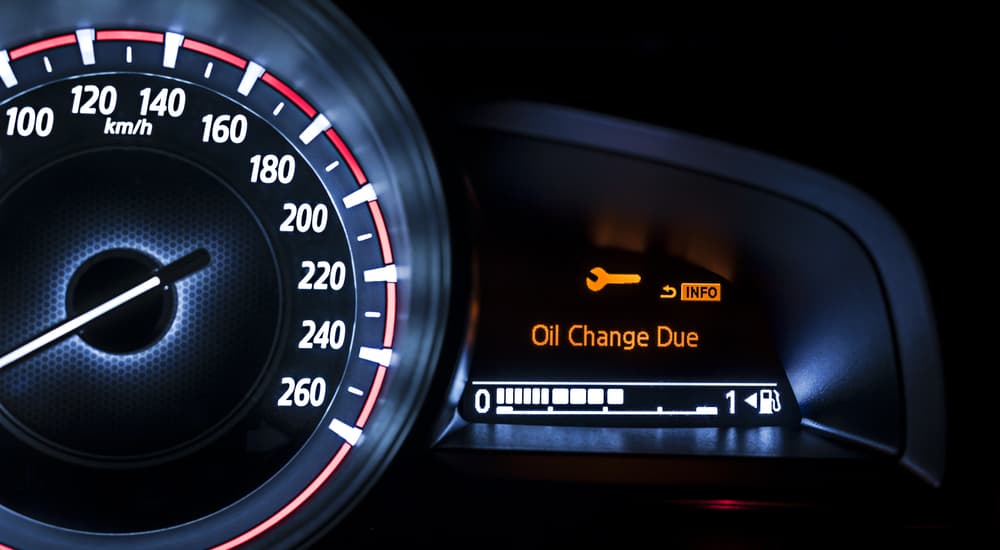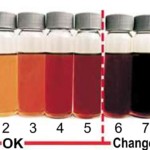Changing the oil in your vehicle is one of the most important maintenance tasks you perform. It doesn’t take long, yet it needs to be done. But how do you know where to go for the oil change, and are all oil change locations created equal? While you can take your vehicle into the dealership service center or a corner shop oil change service provider, there are a few specifics you need to know. So after you’ve searched for an “oil change near me” on a search engine, you will know which locations to consider and what specifically to ask for.
What Kind of Oil Does Your Vehicle Need?
This is the most important question you need to ask yourself (and one some oil change locations will ask you). If you take it into the dealership, they will already know what kind of oil your vehicle needs. But it’s still a good idea for you to know.
First, the oil cap on your engine may have the kind of oil required printed right on top. If it doesn’t, check the owner’s manual of your vehicle. You need to purchase engine oil that is the right thickness. The number on the oil refers to the thickness while the “W” stands for “Winter.” The lower the number, the better it is for cold weather. 5W, for example, is best for colder weather, while the higher number indicates it works best for the summer. This is why 5W-30 and 10W-30 are most popular. As the low number indicates it works well in the winter and the higher number indicates it works well in the summer, these engine oil types work well in a wide range of temperatures. The only time you need to deviate from what the manual suggests is if you’re going somewhere that is extremely cold (think Canada during the wintertime).

What About Synthetic Oil?
When you pull your vehicle into an oil change service center, they are going to ask you all kinds of questions about what sort of oil you want. Should you go with one of the “better,” yet more expensive oils, or does the standard, “cheaper” oil work fine? First, consider what your owner’s manual suggested. If it said you need synthetic oil, go with synthetic oil. Synthetic oil doesn’t break down as quickly as conventional motor oil. Due to this, many supercharged or turbocharged engines recommend synthetic.
With synthetic oil, you won’t need to change it as often. Synthetic motor oil can last you generally between 7,500 and 10,000 miles, while conventional motor oil might last between 3,000 and 7,500. So while you may spend more upfront, you won’t need to change it as often. However, you should still be checking your oil or bringing it in for servicing every 3-5,000 miles just to be safe.
But what about the other options? After all, when you drive up, you are not given just two engine oil options. First, there is an ultra-class full synthetic oil. This is an oil designed specifically for high-end performance vehicles, such as an exotic sports car. Chances are you don’t need this, but if you are out and about with your Ferrari and need an oil change, go with the ultra-class full synthetic.
Advanced full synthetic is another option. It is used for high compression engines and does not burn off as quickly. It is a good oil for harder driving conditions. So you should consider it if you’ll be driving through heavy snow, or if you plan on towing something and your engine will be put to the test.
There might be a synthetic blend option. This costs more than conventional, but it will last longer and is easier on your engine. Many reputable service centers will only offer synthetic and synthetic blend oils, and while they cost more, you are paying for quality.
Lastly, there is a high mileage oil. This is best used if your engine is over 75,000 miles. It is designed specifically to help prevent leaks and cut down on your engine burning through oil.
Specifics to Look For
Sometimes you’ll find an incredible price on an oil change that you simply can’t turn down. When you drive out there, make sure you ask about the oil filter. Sometimes these super cheap oil change destinations don’t change out the oil filter. Make sure they do. Changing the oil without changing the filter is almost pointless. Sure, it gives the engine new oil, but your filter will be full of debris, which means it won’t be able to filter the new oil properly. This can leave specs of debris and gunk within your engine, which increases the chance of it breaking down.
It’s best to think of your engine like a heart, and the oil-like blood. Over time some cholesterol will collect along the veins. An oil filter helps prevent the cholesterol bits (debris that can chip away inside your engine) from collecting along the sides. However, if the oil filter is not replaced, it isn’t able to remove these little bits, which increases the chance of a full or partial block within the engine. This can lead to catastrophic failure with the engine and thousands of dollars in repairs. All because someone didn’t change out your oil filters. So make sure this is done with every oil change.
After you have your oil changed, drive home, and then check your oil level. Again, sometimes these extremely cheap locations want to cut corners. So park, turn the engine off and check the oil level on the dipstick (it’s always a good idea to have a roll of paper towels in the trunk or something, or you can keep some fast food napkins). If the engine oil is low, you’ll want to top it off and then make a mental note not to go back to that location again.
Reset Your Change Oil Light

If you take your vehicle to the dealership for an oil change, they will do this for you. However, if you don’t, or if you change the oil yourself, your change oil light might blink on. This can also happen if you went with the synthetic oil, which will last potentially twice as long as the conventional oil. And do you want to drive around with that red light blinking at you for the next several thousand miles? Probably not. Thankfully, there is a reset sequence you can perform on your vehicle.
You’ll want to check with your dealership for this, or you can look online, but nearly all modern vehicles made within the last decade have a reset sequence you’ll do with your key, gas, and brake.
For example, on a RAM (and all other Chrysler vehicles), insert your key/key fob into the ignition and turn it to “On” (but don’t turn the engine on). Push the gas pedal down to the floor and release three times within 10-seconds. After the third, turn off the car, then turn the vehicle on and start the engine. This will clear the change oil light.
Locating an Oil Change Near You
When it comes to maintaining your vehicle, staying on top of changing out the engine oil is extremely important. It is the lifeblood of your engine, and it needs to be kept clean (and at proper levels). Where do you go for your oil change? Are you someone who takes it into the dealership and has other general inspections and maintenance performed at the same time? Or are you someone who’s always looking for a great deal and will shop around for the best price? Perhaps you change your oil at home. Let us know in the comments, and if you have any tips on saving money on an oil change while making sure you receive proper servicing.



